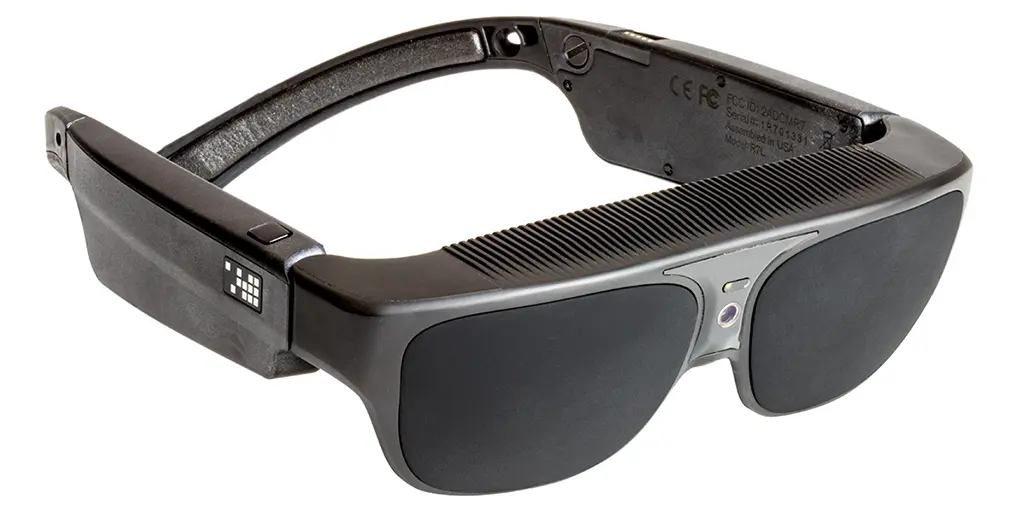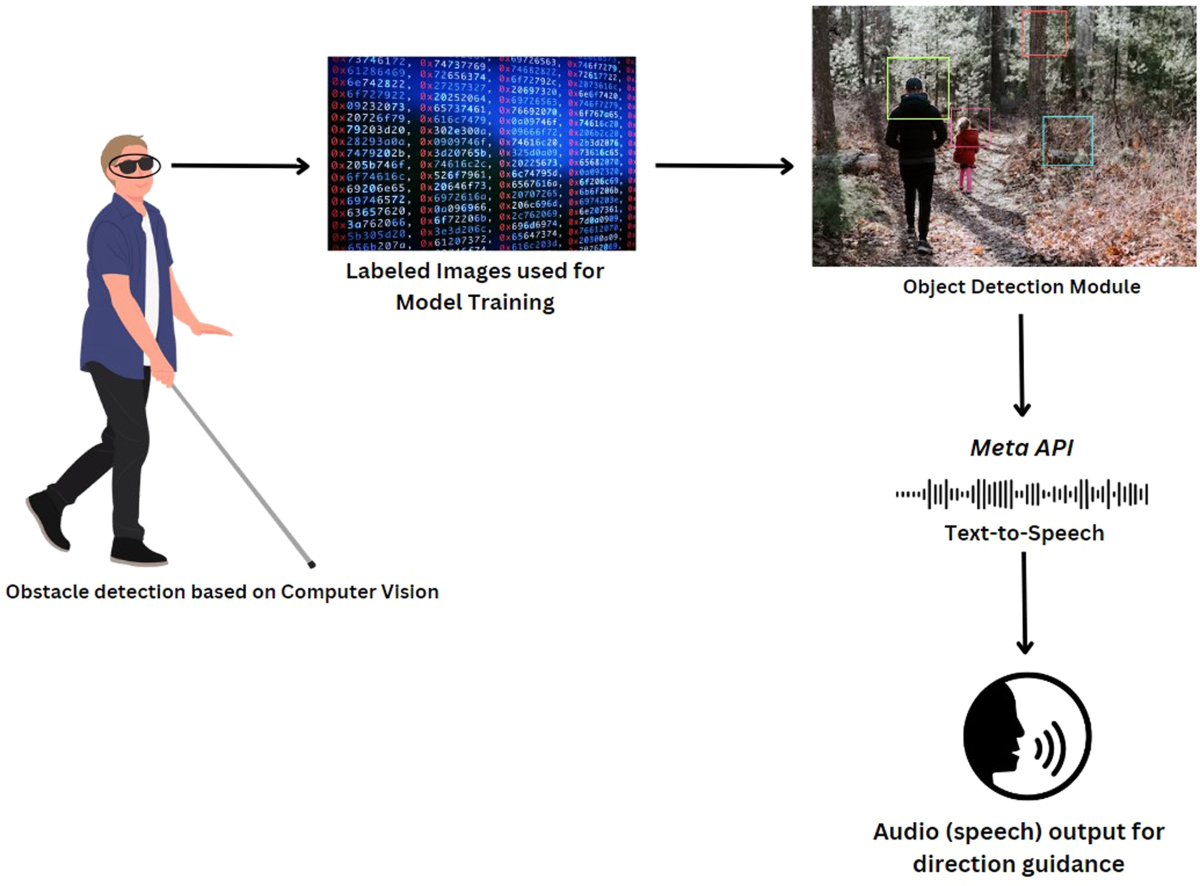Enhancing Access With Assistive Innovation for the Blind
The assimilation of assistive technology for the blind stands for a critical innovation in availability, basically modifying just how individuals browse their atmospheres and engage with culture. From display visitors to ingenious clever canes, these tools not just enhance self-reliance however also advertise inclusivity in different spheres of life. As we discover the diverse sorts of assistive gadgets and their concrete effect on day-to-day living, it comes to be necessary to examine exactly how continuous technological innovations are reshaping the landscape of assistance for the blind community. What effects do these growths hold for the future of accessibility?
Introduction of Assistive Innovation
Assistive innovation refers to a variety of tools and software program created to enhance the abilities of individuals with impairments, consisting of those who are aesthetically damaged or blind. This innovation plays an essential duty in promoting freedom and enhancing the lifestyle for customers. By supplying alternative techniques for accessing information and carrying out daily jobs, assistive technology empowers people to browse their settings extra properly.
The development and execution of assistive technology embrace a variety of principles targeted at fostering ease of access. These principles include user-centered style, which prioritizes the demands and preferences of the individual, and the assimilation of technology right into day-to-day activities. Such advancements ensure that assistive devices are not just practical yet also instinctive and very easy to make use of.
In addition, assistive technology includes a varied range of remedies, from low-tech alternatives like magnifiers to high-tech innovations such as display visitors and Braille screens. The recurring evolution of this field is driven by the requirement to deal with the distinct difficulties dealt with by people with visual problems (Wearable technology for low vision). As modern technology continues to advance, the possibility for enhancing access and advertising inclusivity continues to be promising, eventually adding to an extra equitable culture

Types of Assistive Gadgets
Countless sorts of assistive tools are offered to support individuals who are aesthetically impaired or blind, each created to attend to specific needs and challenges. These gadgets can be broadly categorized into three main types: low-tech, mid-tech, and state-of-the-art remedies.
Low-tech gadgets include items such as magnifiers, Braille labels, and tactile maps. These are reasonably simple devices that enhance the user's capacity to interact with their environment without requiring intricate modern technology.
Mid-tech gadgets frequently entail advanced attributes, such as digital magnifiers and portable Braille note-takers. These tools can use functionalities like speech result, permitting individuals to gain access to info more effectively.

Influence On Daily Living
The availability of different assistive tools dramatically improves the lifestyle for people who are blind or aesthetically damaged, influencing their daily living in profound ways. By integrating modern technologies such as screen viewers, Braille shows, and audio description solutions right into their routines, users gain better autonomy and self-reliance. These tools assist in accessibility to information, enabling people to perform everyday jobs, such as reviewing e-mails, navigating public rooms, and enjoying media content.
Additionally, assistive gadgets equip people to engage even more totally in social interactions and neighborhood tasks. The capability to utilize smart devices outfitted with contact lens store access features permits seamless interaction and connection with others. This connectivity fosters a feeling of belonging and lowers feelings of seclusion.
In specialist settings, assistive innovation supports productivity by allowing people to total job tasks effectively. Devices like voice acknowledgment software program and specialized magnifying gadgets make it possible for individuals to join the labor force on equal footing with their sighted peers.

Innovations in Modern Technology
Current technical innovations have actually significantly changed the landscape of tools readily available for individuals who are blind or visually impaired. The combination of fabricated knowledge (AI) and artificial intelligence has actually generated applications that boost navigation and item recognition. For instance, smart device applications can now use AI to determine and explain surroundings in real-time, supplying customers with valuable contextual information.
Furthermore, developments in haptic modern technology have actually resulted in the development of smart walking sticks furnished with sensing units that find obstacles and offer tactile responses. This equips customers to browse their setting with boosted confidence and self-reliance. Additionally, technologies in text-to-speech software program and braille display screens have improved the ease of access of digital material, enabling seamless interaction with different media.
Wearable technologies, such as smart glasses, are additionally making strides in assisting aesthetic disability. As technology continues to evolve, the potential for also more transformative devices continues to be on the horizon.
Future Trends and Innovations
As innovation swiftly proceeds, the future of assistive devices for individuals who are blind holds tremendous promise. Technologies in artificial intelligence (AI) and device discovering are positioned to revolutionize the way blind individuals connect with their settings. AI-driven applications are being developed to improve things recognition, permitting individuals to determine and navigate their environments with greater simplicity and accuracy.
In addition, innovations in haptic feedback technology are making it possible for the creation of responsive maps and navigation help that offer real-time info through touch. These advancements not only improve wheelchair yet also foster freedom. Furthermore, wearable tools outfitted with augmented fact (AR) attributes are emerging, using individuals aesthetic details through sound descriptions, thereby connecting the void between the digital and physical globes.
In addition, the integration of wise home modern technology presents new possibilities for ease of access, permitting individuals to control their living atmospheres through voice commands or mobile phone applications. As partnership between tech developers and the blind neighborhood proceeds, the emphasis on user-centered layout will certainly make certain that future developments are customized to check that meet the one-of-a-kind needs of this populace (Wearable technology for low vision). The trajectory of assistive technology guarantees a more empowering and comprehensive future for people who are blind
Final Thought
To conclude, assistive technology plays a vital role in boosting ease of access for people with aesthetic disabilities. The varied variety of tools, consisting of display readers and wise canes, dramatically enhances everyday living and fosters freedom. Constant developments in technology and user-centered style guarantee that these devices provide efficiently to the distinct requirements of the blind neighborhood. As advancements development, boosted inclusivity and empowerment can be expected, inevitably improving the lifestyle for those impacted by aesthetic impairments.
The assimilation of assistive innovation for the blind represents a crucial improvement in accessibility, essentially changing exactly how people browse their settings and involve official source with culture.Assistive modern technology refers to a range of devices and software application made to enhance the capacities of individuals with handicaps, including those that are blind or aesthetically damaged. Wearable technology for low vision.As innovation quickly progresses, the future of assistive tools for individuals that are blind holds immense pledge. The trajectory of assistive technology promises a much more comprehensive and empowering future for people who are blind
In verdict, assistive technology plays a critical role in enhancing availability for individuals with visual disabilities.